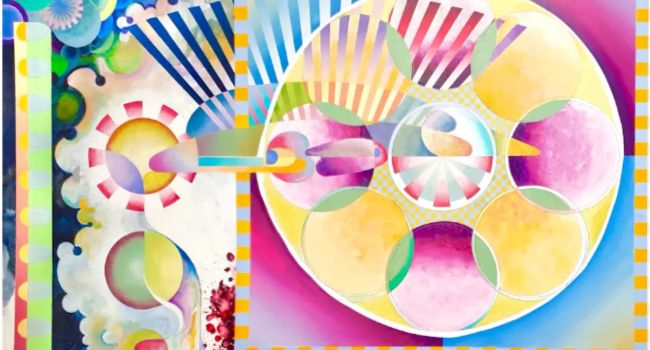Oliver Perry’s journey into the world of art began as a means of survival. In the confines of a Dickensian boarding school, where verbal and physical violence were part of daily life, Perry found solace in the art room. For him, painting was more than just an escape; it was a way to cope with the harsh realities surrounding him and to speak out against the injustices that others suffered. This early experience planted the seeds for a career that has spanned over four decades, during which Perry has consistently used his art to comment on society, mental health, and the apathy that often accompanies our most pressing issues.

Perry’s early experiences shaped his artistic philosophy and continue to influence his work. His commitment to speaking up for the less fortunate is evident in the themes he explores, which often revolve around social commentary. Perry doesn’t shy away from difficult subjects; instead, he confronts them head-on, using his art to highlight the complexities of modern life. Whether it’s the pervasive influence of social media or the stigmatization of mental health, Perry’s work invites viewers to reflect on the world around them and consider their roles within it.
Over the years, Perry’s artistic style has drawn heavily from Cubism and Surrealism. These influences have gradually merged into a form of geometric abstraction that is distinctly his own. Perry’s work is characterized by its use of shapes and colors, which come together to create compositions that are both visually engaging and thought-provoking. His pieces often challenge the viewer’s perception, encouraging them to look beyond the surface and engage with the deeper messages embedded within the artwork.
One of Perry’s artworks, “Dancing Under Dangerous Skies,” is part of his “Disco Science” series. This series is a reflection on a fundamentally made-up theory in bio-physics, inspired by the phenomenon of silent discos. In these events, people dance to music heard only through headphones, creating a surreal and often disjointed spectacle for those observing from the outside. Perry uses this concept as a metaphor for society, where individuals continue with their lives, seemingly oblivious to the dangers and atrocities unfolding around them.
“Dancing Under Dangerous Skies” is more than just a visual representation of this idea; it’s a commentary on how, as a species, we often choose to ignore the harsh realities of the world in favor of the comforts of the everyday. The piece draws on the words of Nietzsche, “Those who were seen dancing were thought to be insane by those who could not hear the music,” to underscore the disconnect between perception and reality. It also echoes the sentiments of Dr. Martin Luther King Jr., who observed that “In the end, we will remember not the words of our enemies, but the silence of our friends.” Through this artwork, Perry challenges viewers to confront their own complacency and consider the impact of their silence in the face of injustice.
Perry’s art is not static; it’s an ongoing dialogue with the world. Each piece is a new chapter in his exploration of societal issues, pushing the boundaries of how art can be used as a tool for communication and change. His work is a testament to the power of art to not only reflect the world but to challenge and reshape it.
Oliver Perry’s art is a reminder of the role that artists can play in society. His work goes beyond mere aesthetics, serving as a commentary on the social, mental, and political issues that define our times. Perry’s ability to merge Cubism, Surrealism, and geometric abstraction into a cohesive and impactful style sets him apart as an artist who is not afraid to use his voice—and his art—to speak up for those who cannot.
In “Dancing Under Dangerous Skies” and throughout his broader body of work, Perry invites us to look beyond the surface and engage with the world in a more meaningful way. His art serves as both a mirror and a megaphone, reflecting our society’s flaws while calling for a change. Perry’s journey from a troubled childhood to a career defined by social commentary is a testament to the transformative power of art, and his work continues to resonate with those who seek to understand the complexities of the human experience.

